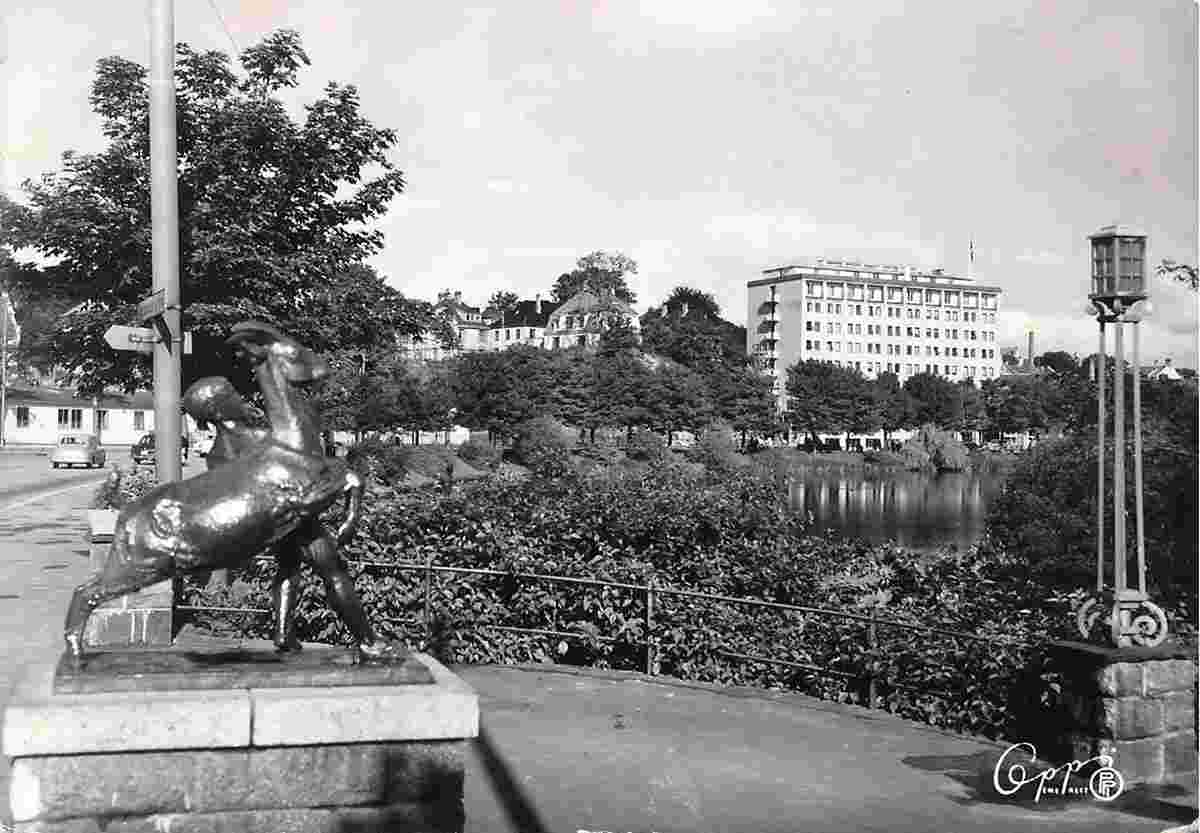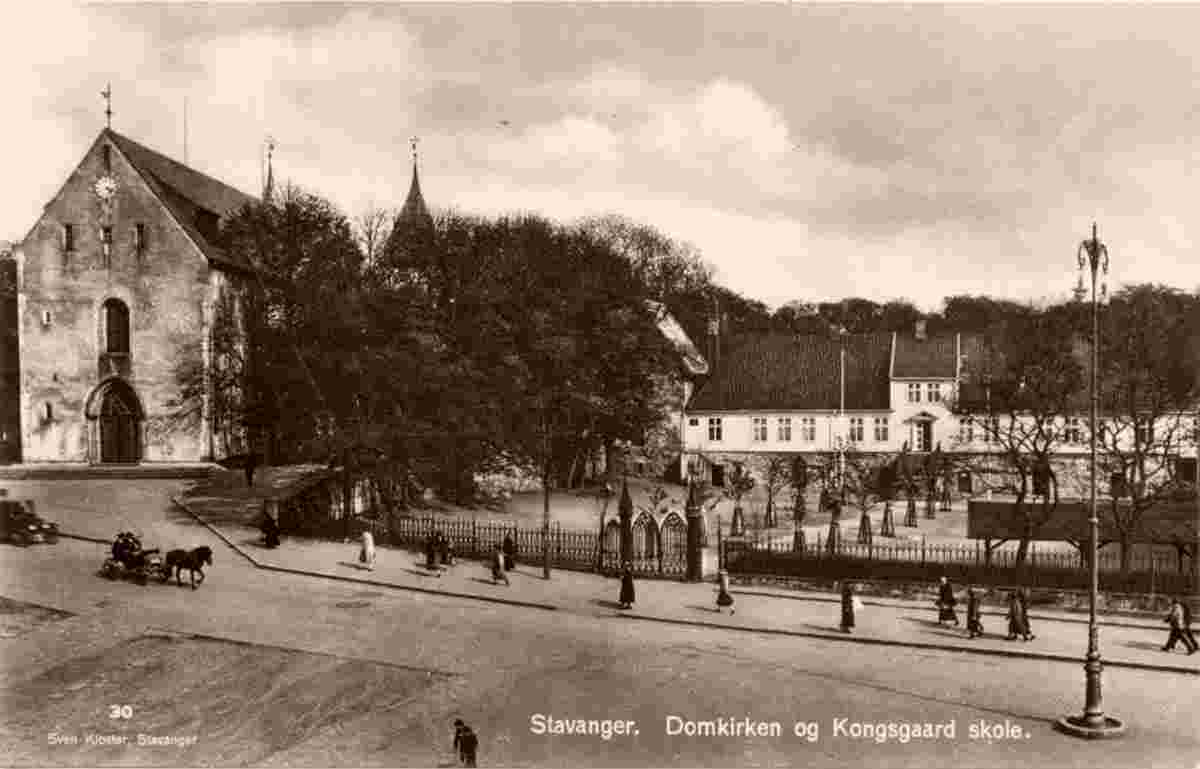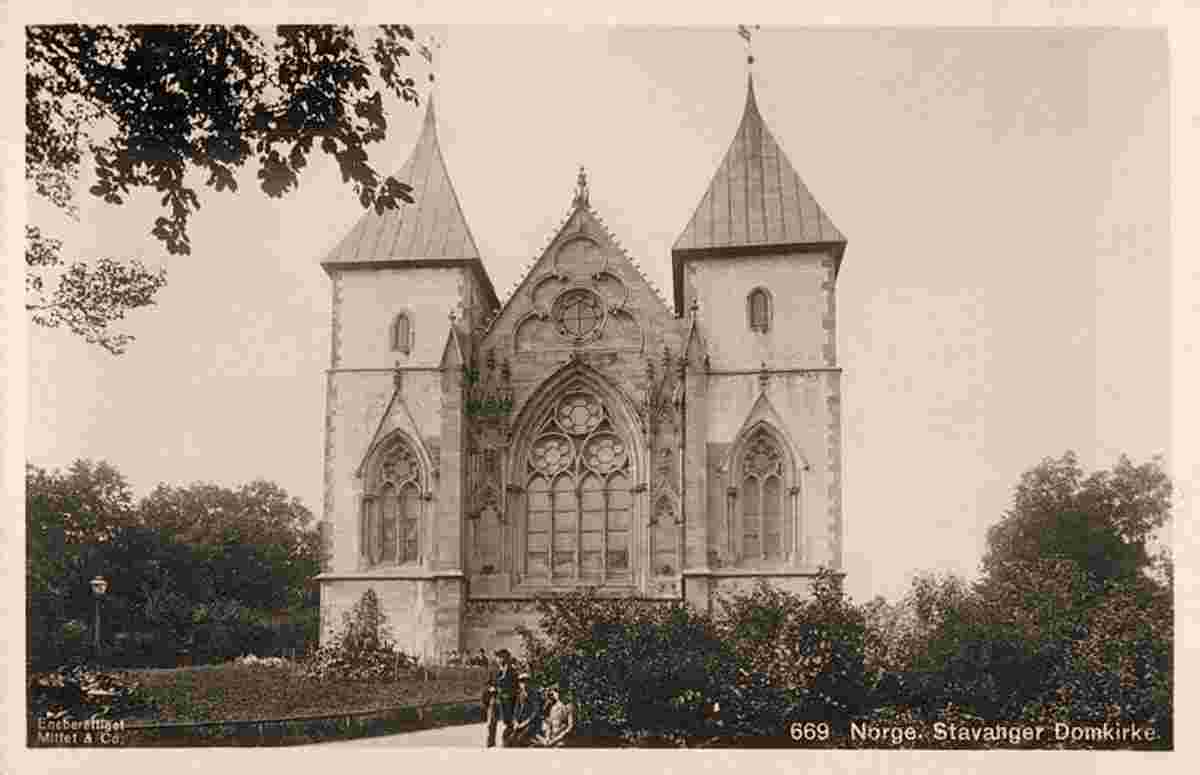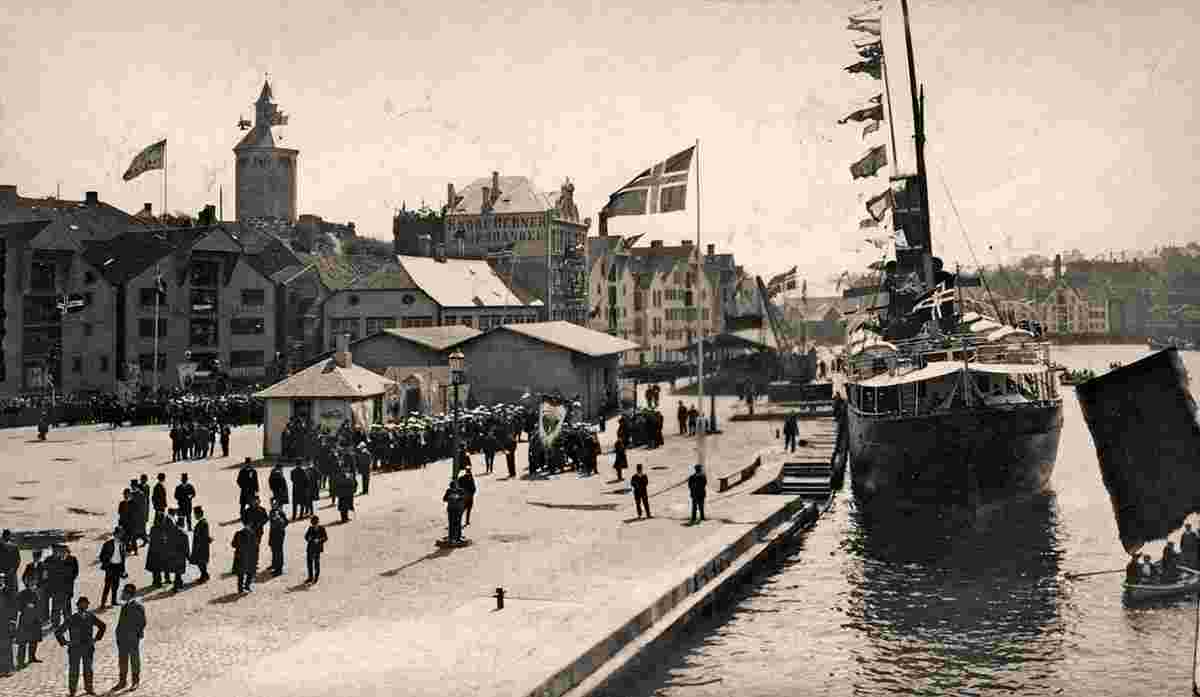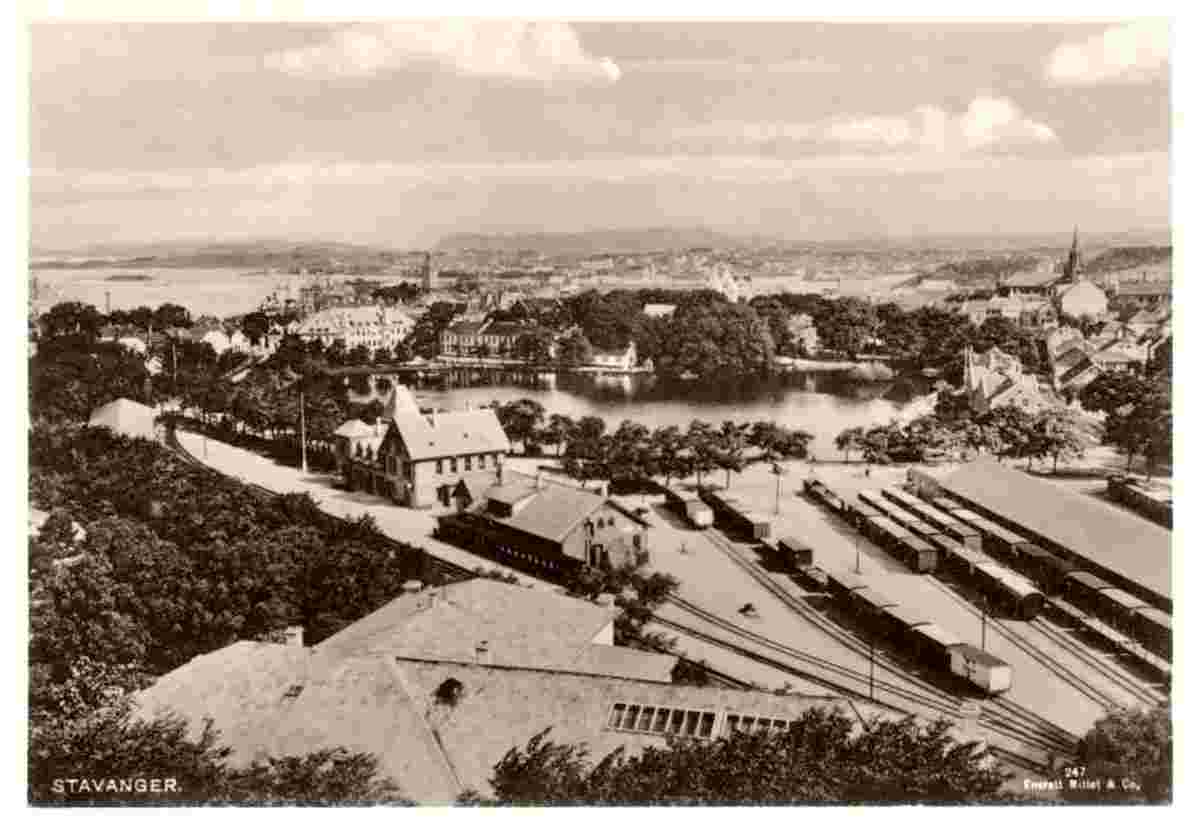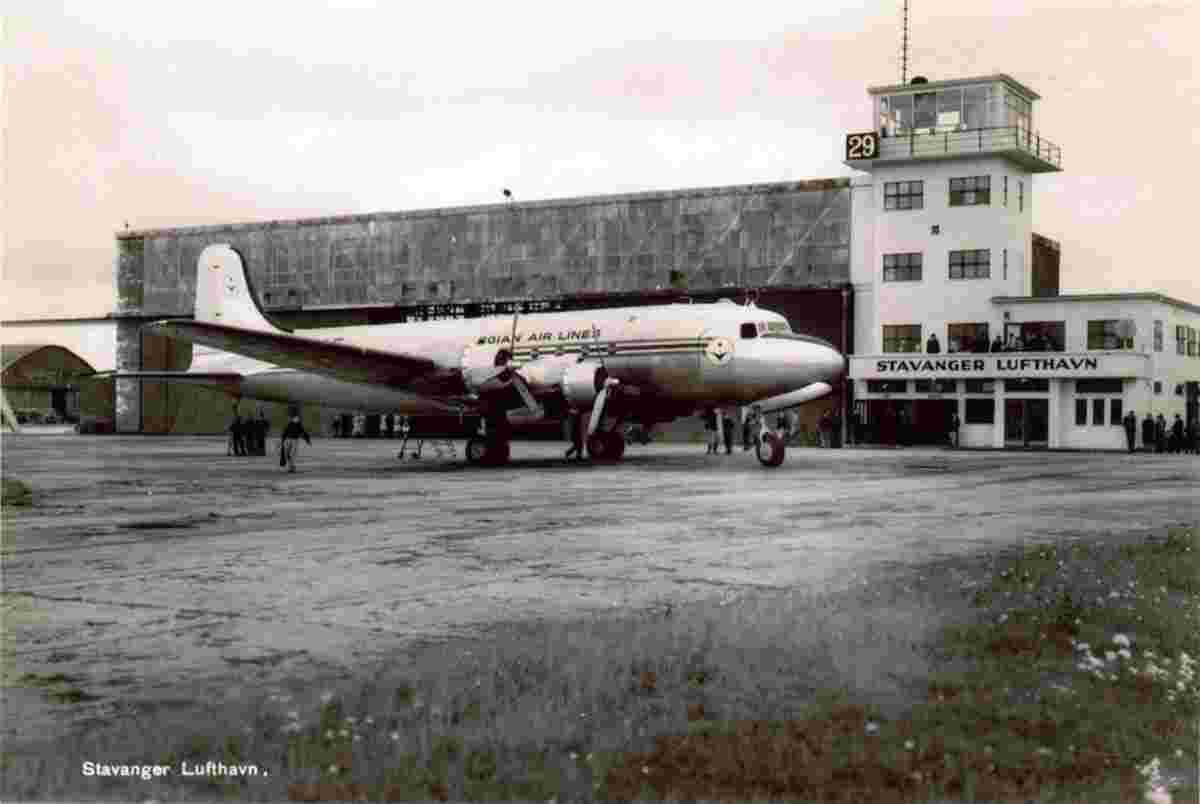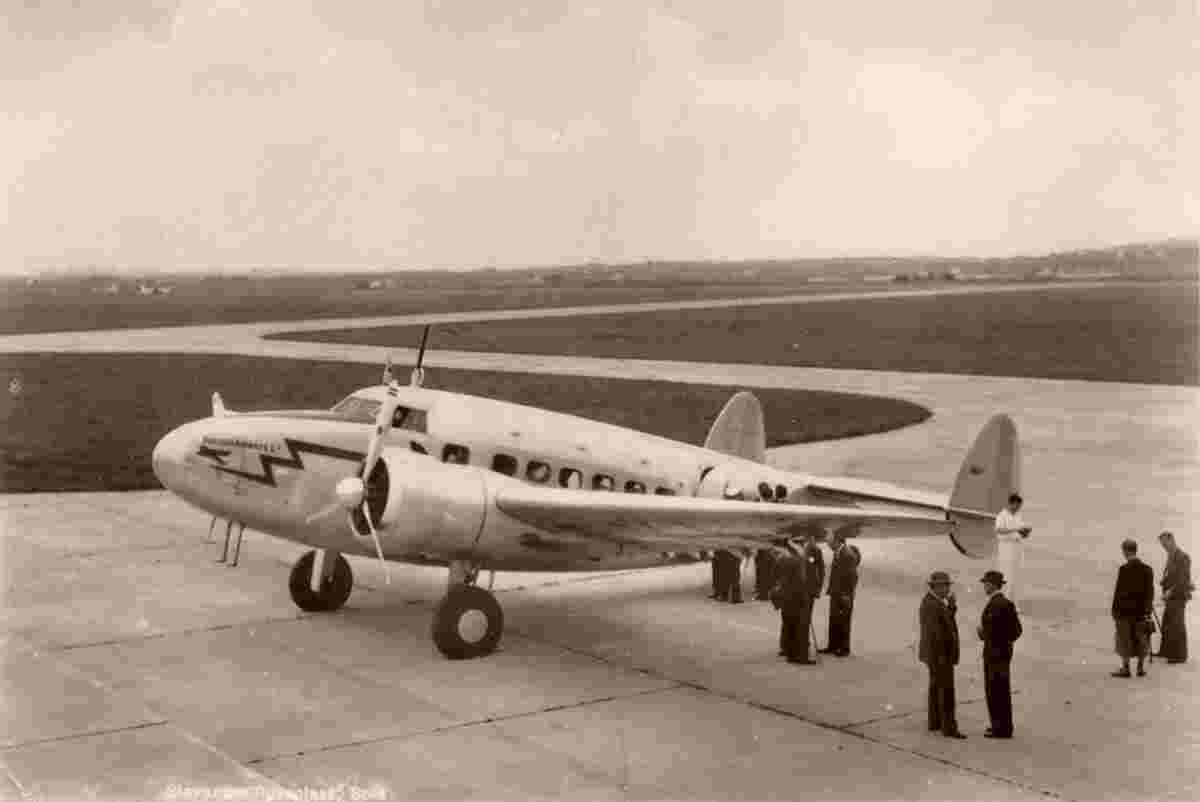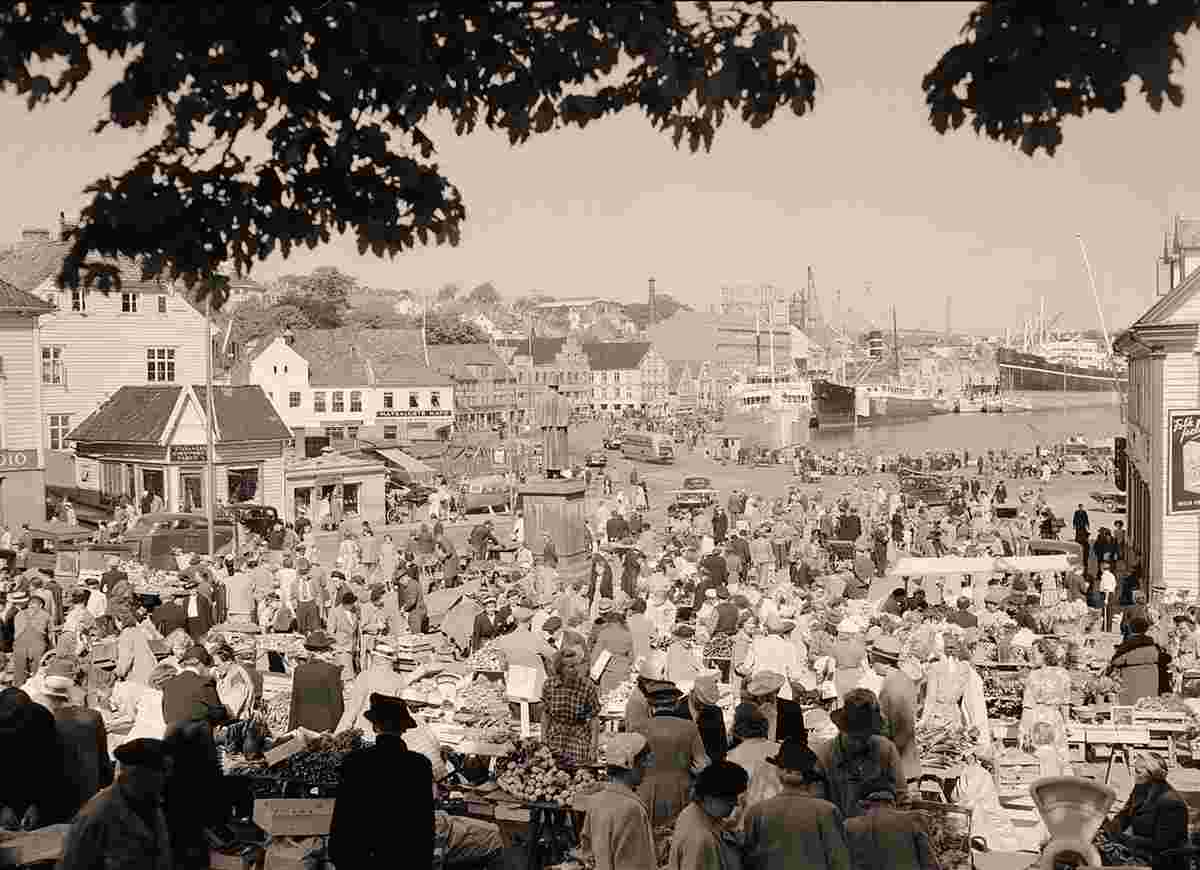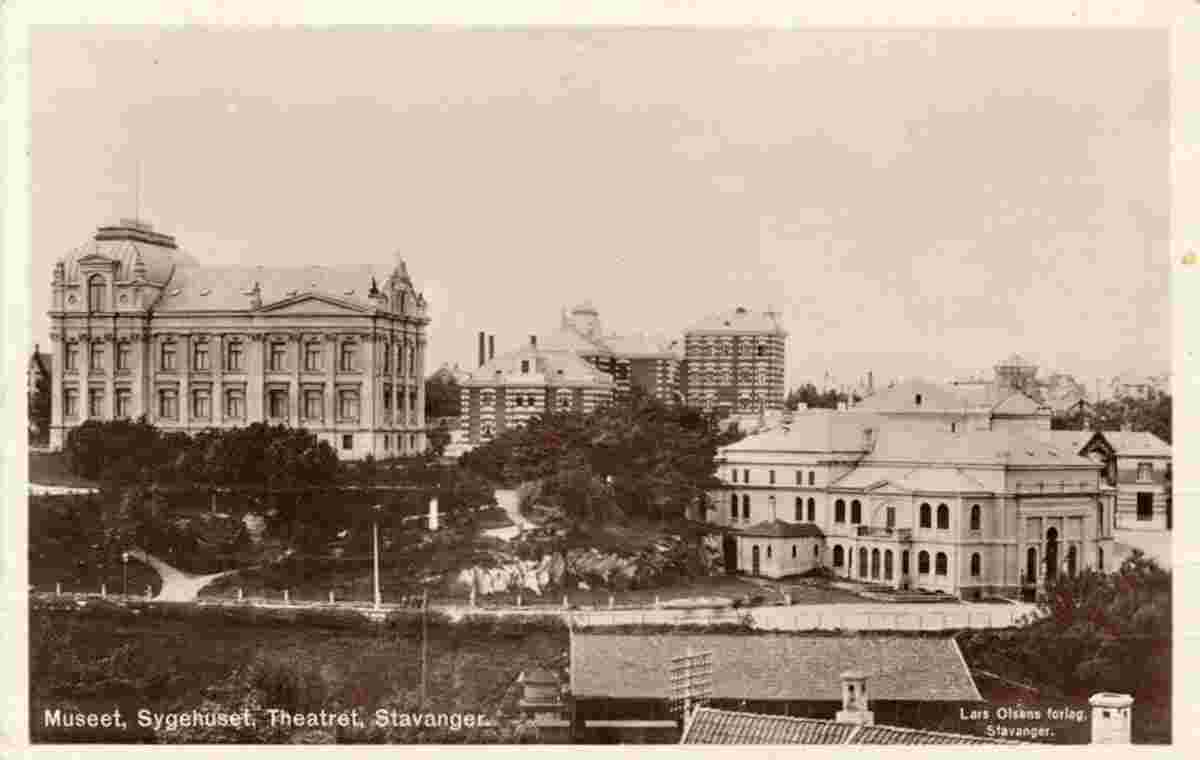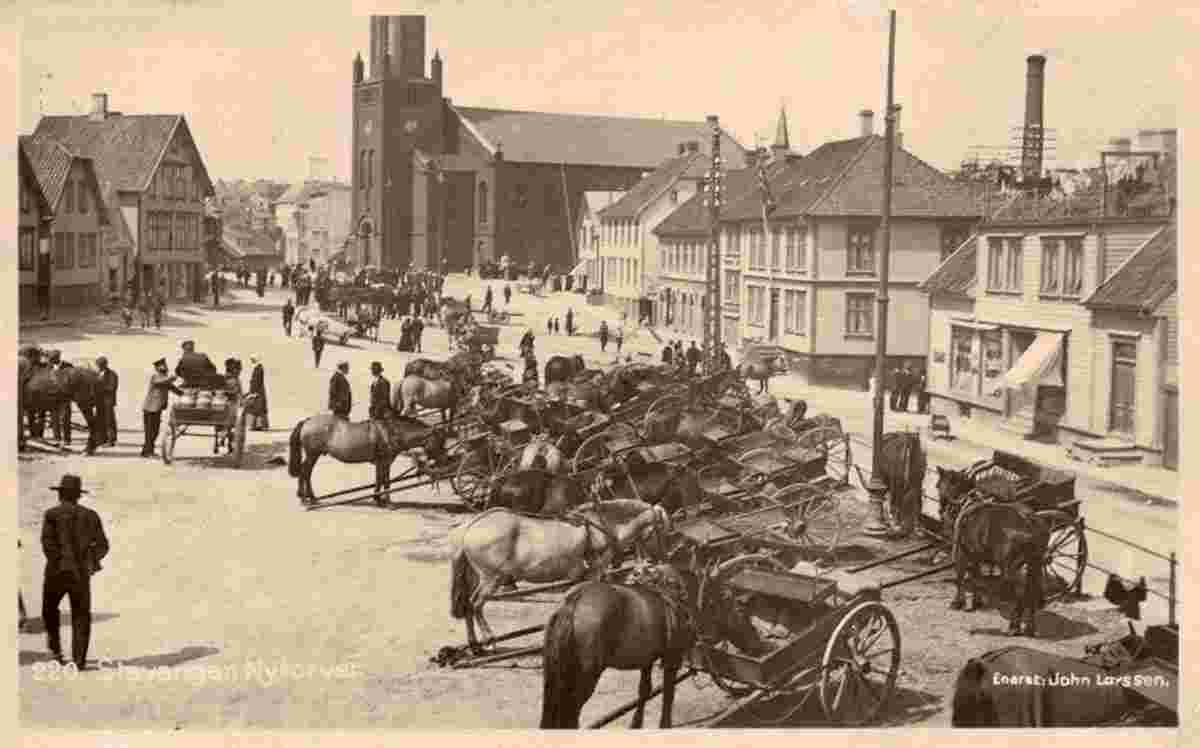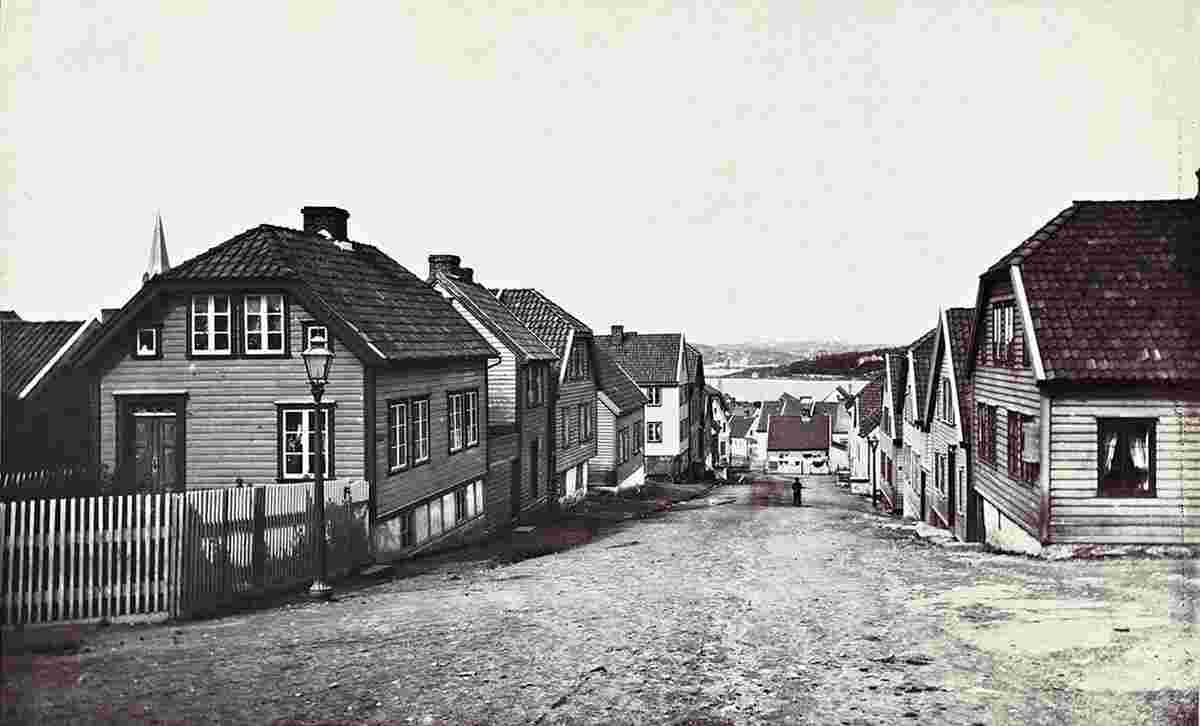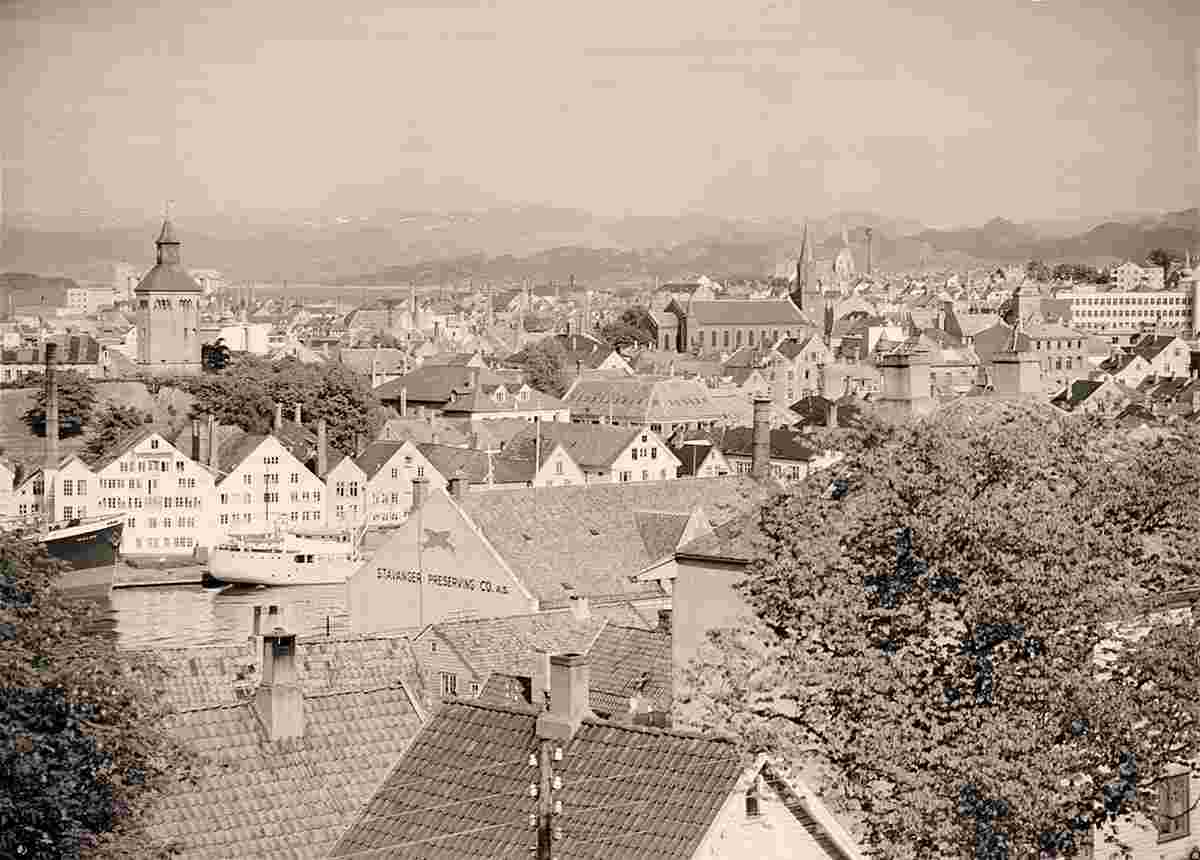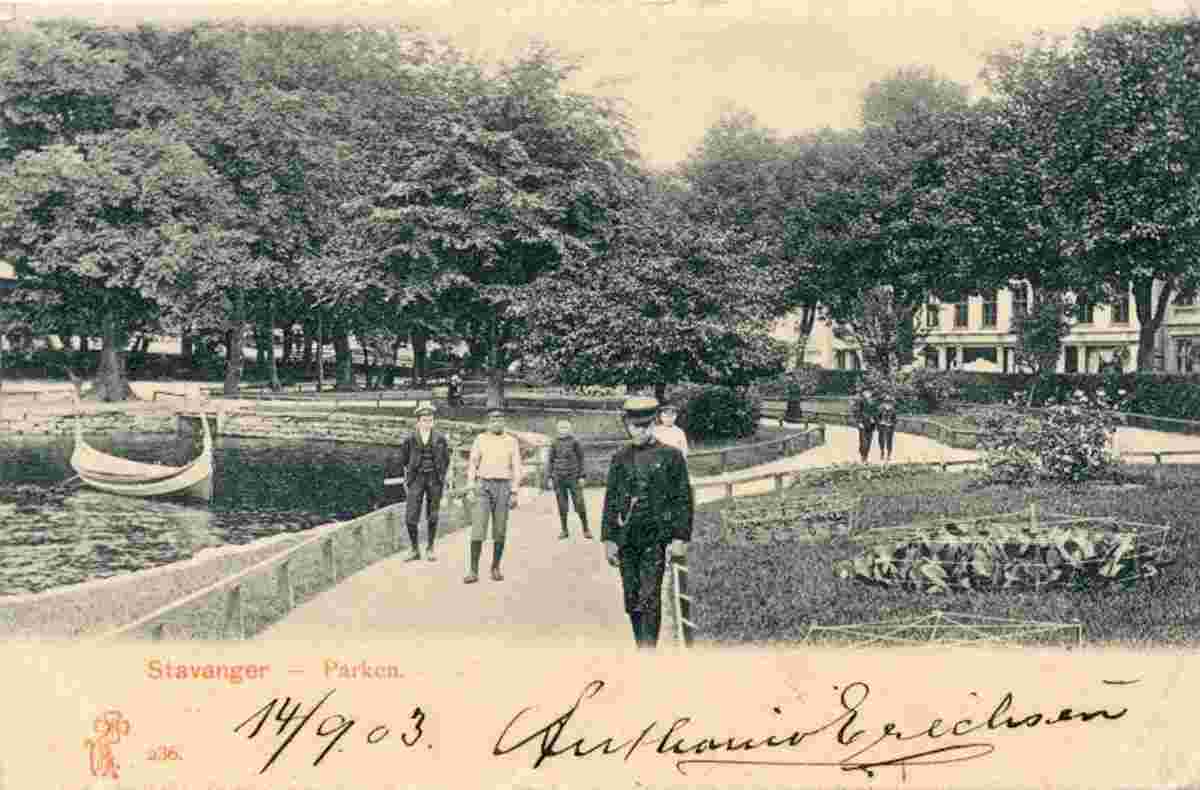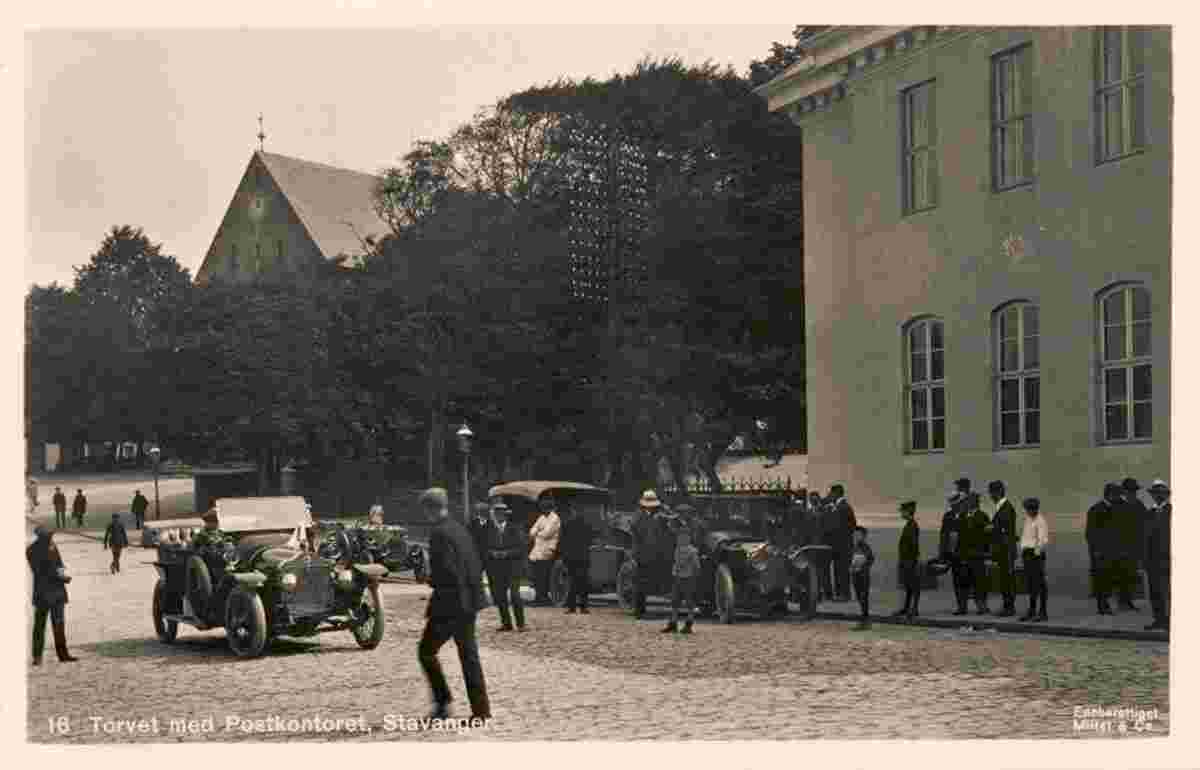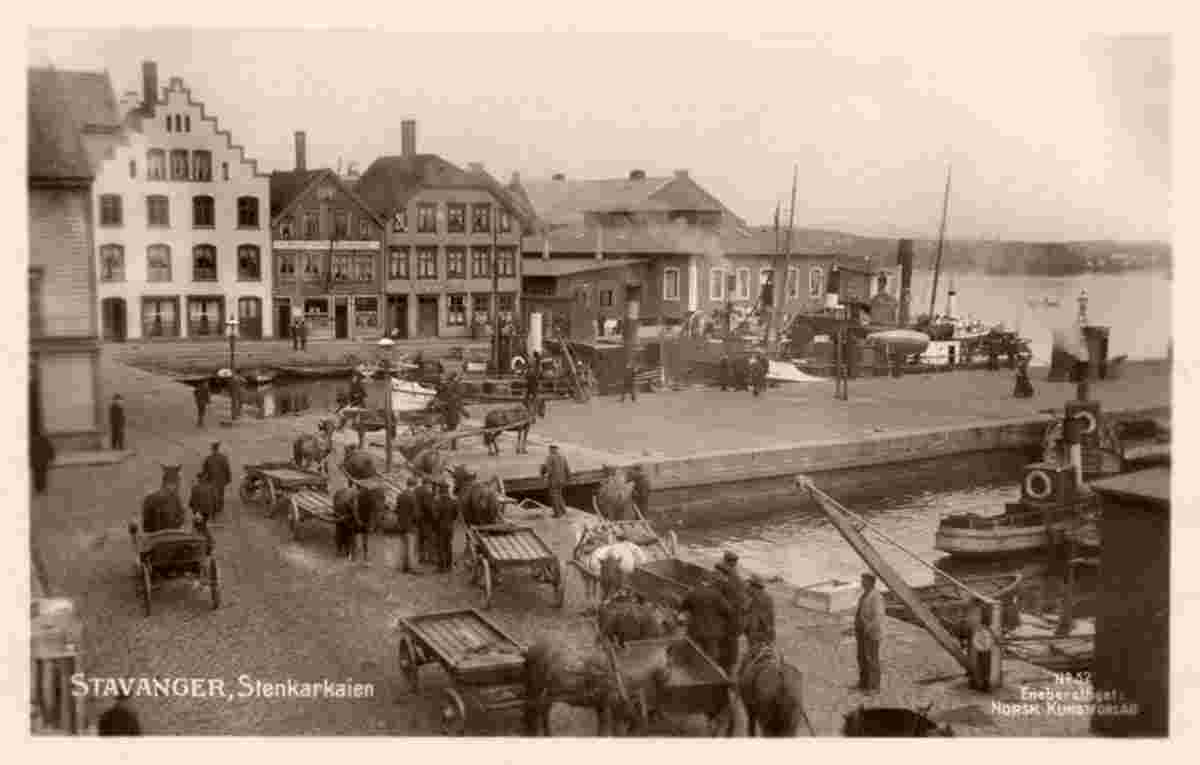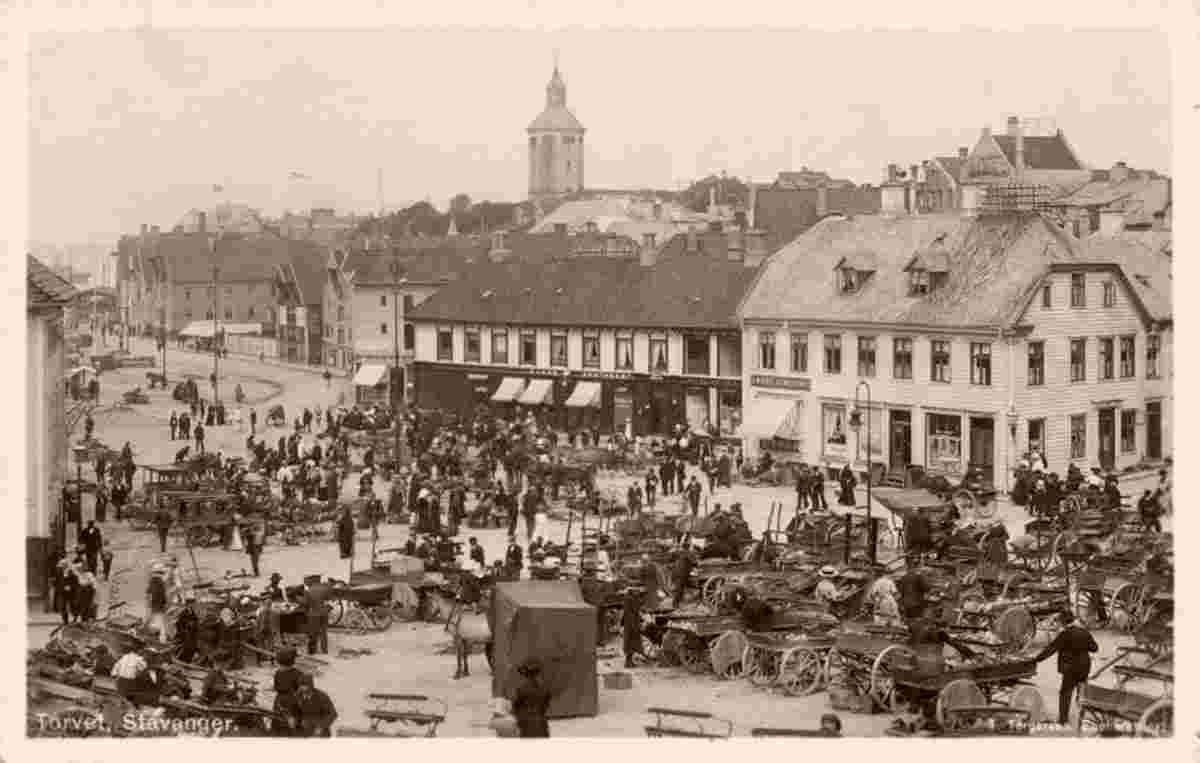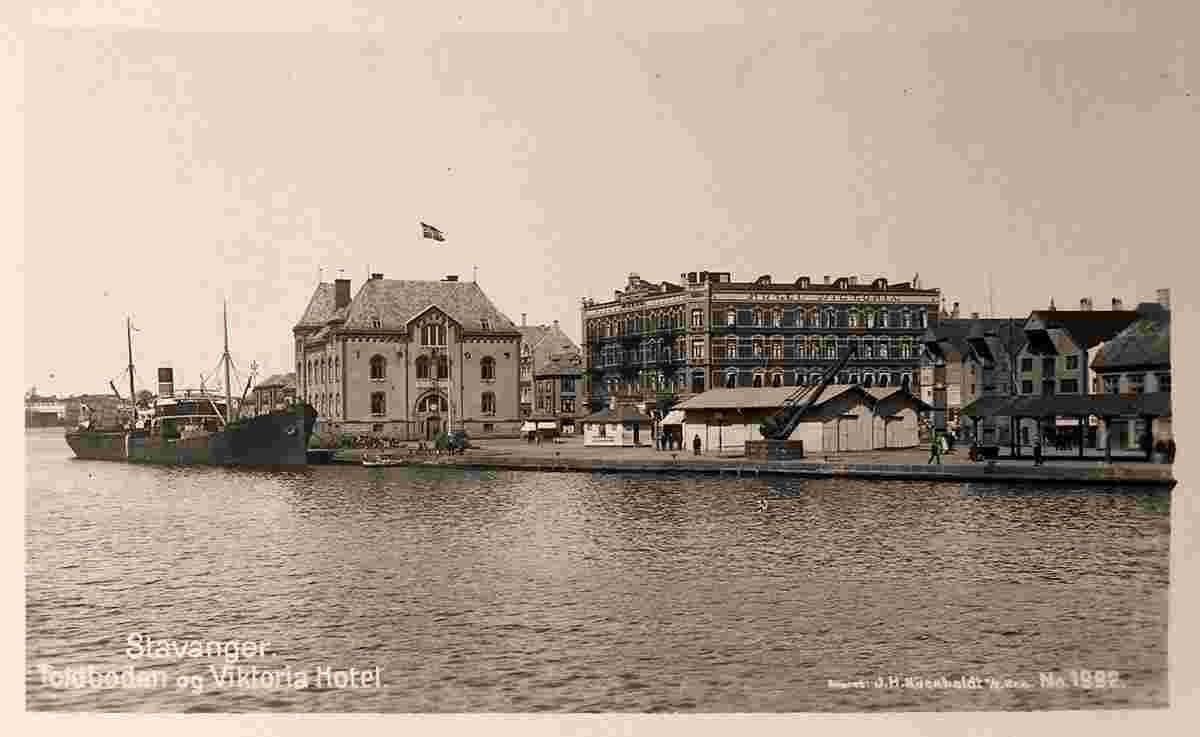Historical and old photos of Stavanger, Rogaland
HistoryThe first traces of settlement in the Stavanger region come from the days when the ice retreated after the last ice age c. 10,000 years ago. A number of historians have argued convincingly that North-Jæren was an economic and military centre as far back as the 9th and 10th centuries with the consolidation of the nation at the Battle of Hafrsfjord around 872. Stavanger grew into a center of church administration and an important south-west coast market town around 1100–1300. Stavanger fulfilled an urban role prior to its status as city (1125), from around the time the Stavanger bishopric was established in the 1120s. Bishop Reinald, who may have come from Winchester, England, is said to have started construction of Stavanger Cathedral (Stavanger domkirke) around 1100. It was finished around 1125, and the city of Stavanger counts 1125 as its year of foundation. With the Protestant Reformation in 1536, Stavanger's role as a religious center declined, and the establishment of Kristiansand in the early 17th century led to the relocation of the bishopric. However, rich herring fisheries in the 19th century gave the city new life. Stavanger was established as a municipality 1 January 1838 (see formannskapsdistrikt). On 1 January 1867, a small area of Hetland municipality (population: 200) was transferred to the city of Stavanger. Again on 1 January 1879, another area of Hetland (population: 1,357) was transferred to Stavanger. Then again on 1 January 1906, the city again annexed another area of Hetland (population: 399). On 1 July 1923, part of Hetland (population: 3,063) was moved to the city once again. Finally on 1 July 1953, a final portion of Hetland (population: 831) was moved to Stavanger. In the 1960s, the work of the Schei Committee pushed for many municipal mergers across Norway. As a result of this, on 1 January 1965, the city of Stavanger (population: 51,470) was merged with the neighboring municipalities of Madla (population: 6,025) and most of Hetland (population: 20,861). The city's history is a continuous alternation between economic booms and recessions. For long periods of time its most important industries have been shipping, shipbuilding, the fish canning industry and associated subcontractors. In 1969, a new boom started as oil was first discovered in the North Sea. After much discussion, Stavanger was chosen to be the on-shore center for the oil industry on the Norwegian sector of the North Sea, and a period of hectic growth followed. On 1 January 2020, the municipalities of Finnøy, Rennesøy, and Stavanger are scheduled to merge into one, large municipality called Stavanger. City developmentStavanger is one of Norway's oldest cities. It emerged in the 12th century during a period of population growth and increasing urbanization throughout northern Europe. The archaeological and historical sources about the first city development are sparse. Therefore, there is much we do not know about the first city development. It stands out as an important area from early times, as a desirable foothold for the monarchy and the church, as both needed a strong foothold in the South West coast area. In North Jæren, rich archaeological material suggests that the chiefs held considerable power from the early Iron Age. Stavanger had a natural harbor and was, with Jæren in the south, strategically important to the county of the East as well as to the shipping route along the western coast and the fertile Ryfylke Islands in the north. The earliest Christian impulses in Norway came to Stavanger region through trade connections with Continental Europe and Great Britain. This flourished during the Viking era. In the mid 10th century, traditional Norse burial customs ceased in the Stavanger area, at the same time as the first Christian priests began their work. Big stone crosses are visible memorials of this early Christian age (including the Tjora and Kvitsøy). On the overland approach to Stavanger, a memorial cross of HERS and lendmann Erling Skjalgsson was erected after his fall in 1028. Erling controlled power over the South West coast, and the location of the cross indicates that he had a special connection to Stavanger. The inscription on the cross shows a priest was responsible for the inscription, and he may have performed an early service at a church on site. Archaeological investigations in the current downtown and in the crypt of the Cathedral show that the great fire of 1272 probably left large parts of the city and the cathedral in ruins, including the Romanesque chancel of the cathedral. The reconstruction after the fire led to the cathedral's Western Front being replaced with a vestibule, as well as to the construction (or reconstruction) of St. Mary's Church, Bishop's Chapel, the Gothic cathedral and the expansion of the stone cellar at Kongsberg. Stavanger has a long history of education in Western Europe. It was the monastery here that first saw the need to train new employees through education. The first organized teaching in the city probably took place at a Benedictine monastery in the town, either Olav's Monastery or Monastery of people from the mid-12th century. One of the most important events in Stavanger's city history was the gift letter that King Magnus Erlingsson gave to Stavanger Bishop Eirik Ivarsson in the second half of 1100. Exactly when the king made this gift letter, and under what circumstances it happened is unknown. It may have been in 1163–1164, in connection with the King Magnus's coronation, but could also have been around 1181–1184, in connection with the support Stavanger Bishop Erik gave King Magnus at the end of the king's fight against the late King Sverre. It is undoubtedly correct to characterize Stavanger as a church city throughout the Middle Ages, up to the Reformation. The Reformation, however, dealt a hard blow to the Church in specific and Stavanger in general. The cathedral, the bishop and canons of the monastery had been large landowners. Recession of the city began with the loss of people in rural areas, as a result of which the revenues of the cathedral and the bishop fell dramatically due to reduced rental income. In 1537 the bishop's and the monastery's estate and property was confiscated by the king. Kongsberg was plundered by Christoffer Trondsen in 1539, at which time St. Swithun's casket disappeared and Bishop Hoskuld Hoskuldsson may have been executed. World War IIIn a prelude to the invasion, on 8 April, the German freighter Roda (6780 grt.) anchored by Ulsnes. Roda was reportedly loaded with coke, but customs officials and police authorities became suspicious about other cargo when they observed that the ship was not riding deep in the water. The ship was boarded and was ordered to move to Riska. However, Roda did not move, and the captain of the Æger, Niels Larsen Bruun, decided on his own initiative to sink the ship. After sending the crew off in lifeboats, Æger used 25 shots with 10-centimetre (3.9 in) Bofors guns to sink Roda. Early on the morning of 9 April 1940, explosions and bomb blasts from Sola-edge and news bulletins on radio announced the German attack on Norway. Sola Airport was the Germans' first target on North Jæren. The airport was attacked by six German Messerschmitt Bf 110 fighters around 8 am. The airport had been built in 1937, and in April 1940 fortifications round the airport were not yet complete. Fortifications consisted of a concrete bunker still under construction and several open shooting positions. Armament consisted of three heavy anti-aircraft machine guns, three heavy machine guns configured for ground targets, and some light machine guns at the disposal of the approximately 80 soldiers who defended the airport. The bomber wing was transferred to Sola Airport in 1939, but the planes, a total of six Fokker and three Caproni aircraft, were old and outdated. Shortly after the attack began, however, they took off. The German air attack increased in intensity. The bombardment lasted for about an hour before ten slow Ju 52 transport aircraft arrived over the airport. They had taken off from the airport at Hamburg a few hours earlier. In a parachute assault, the transport planes first dropped yellow containers containing weapons and equipment, then between ten and twelve paratroopers from each plane. This was only the second ever wartime parachute assault; the first had occurred only three hours earlier, when a bridge south of Denmark was captured in the same way. At the Sola airport, the concrete bunker held out longest, but was eventually put out of action with a hand grenade. While Norwegian soldiers were badly injured in the attempted defence, there were no fatalities; in contrast; the Germans lost several. Lieutenant Thor Tang, who led the Norwegian defense of the airport, capitulated at 10:00, and the Germans immediately began landing troops, fuel and other supplies. In all, 200 to 300 transport aircraft arrived in Sola during invasion day, and by evening several hundred soldiers and large quantities of materiel had been moved from Germany to Sola. By around 12:30 on 9 April, the first German troops advanced into Stavanger without resistance. The police station, telephone office, telegraph center, post office, port office, customs house and the gas company were the most important places, and now came under control of the Germans. The city was conquered without conflict, but the first sparks of resistance had been ignited, and several men left the city and made their way to the Norwegian troops inside Gjesdal, there to join the armed struggle against the enemy. The Germans had placed a high priority to have a good railway connection between the air base at Sola – Stavanger district, and the rest of the country. However, it was not until 29 April 1944, that the Southern Railway was completed to Stavanger. In 1940, the Germans had envisioned it to be completed no later than 1 November 1941. After Hitler's death in 1945, Grand Admiral Karl Dönitz took over leadership of the German forces, and on 9 May 1945, gave the head of the German armed forces in Norway, General Franz Böhme, orders that "Reichskommissar" in Norway, Josef Terboven, was deposed and that all his duties were transferred to Böhme. To Böhme, in turn, he gave the task of how the capitulation of Festung Norwegen was to be implemented. There were around 15,000 German soldiers in Rogaland in 1945, and it was there where the commander of 274 Infantry Division, General Weckman, gave the formal German surrender. Before repatriation, the Germans were required to remain and clean up after five years of occupation. There were 180 German minefields in Rogaland, with a total of 480,000 mines, all of which the German Wehrmacht were required to clear. 62 Germans were killed and 94 were injured during mine clearance in Rogaland. Mines from this period continue to be uncovered. Oil capitalIn 1969, a new boom started as oil was first discovered in the North Sea. After much discussion, Stavanger was chosen to be the on-shore center for the oil industry on the Norwegian sector of the North Sea, and a period of hectic growth followed. In March 1965 an agreement was signed between Norway and the United Kingdom on the sharing of the continental shelf by the median line principle. That same year a similar agreement was signed between Norway and Denmark. It was designed as a legal regime for oil exploration. The first licensing round on the Norwegian shelf was announced on 13 April 1965, and in August of that same year the government granted 22 licenses for 78 blocks for oil companies or groups of companies. The production license gave oil companies exclusive rights to exploration, drilling and production in a defined geographical area for a given period at an annual fee. Esso was the first oil company to start drilling for oil off the coast of Norway. The semi-submersible drilling vessel Ocean Traveler was towed from New Orleans to Norway, and the vessel began drilling on 19 July 1966, at block 8/3, about 180 kilometres (110 mi) southwest of Stavanger. Origin: en.wikipedia.org | ||||||||||||
 |
Historical and old photos of Stavanger, Rogaland
Historiske og gamle bilder av Stavanger, Rogaland |
| Main page • Countries of Europa • Cities of Norway |
| Robinson Rd, CB 13862 Nassau, NP, The Bahamas |
